7 tips to banish weeds from your lawn that won't harm the grass
Weeds don't have to destroy your perfect lawn — here's how to eliminate them without harming grass
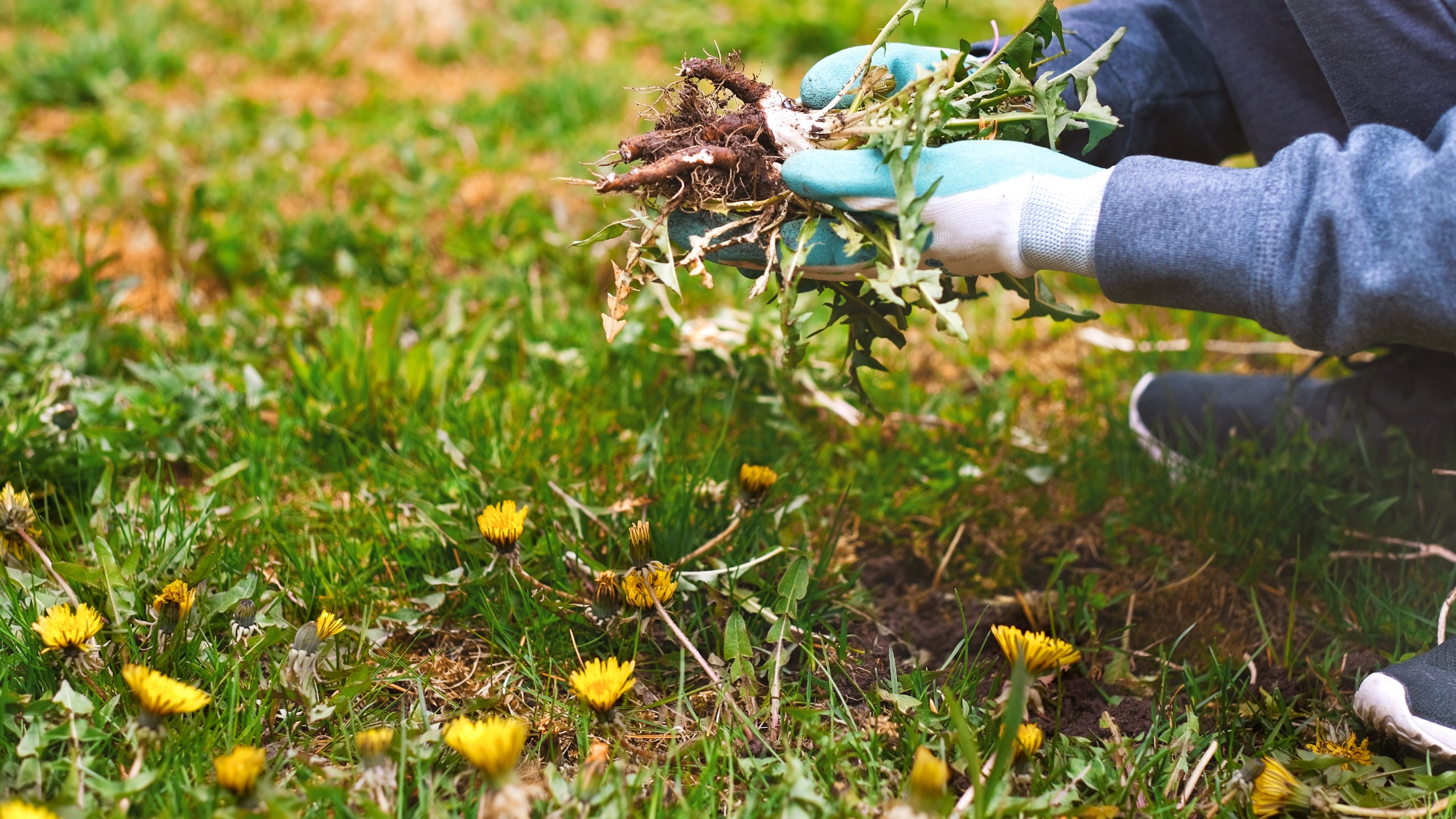
Spring brings renewed life to our gardens and lawns, but alongside the desirable greenery comes the inevitable invasion of weeds.
These opportunistic plants can quickly overtake a well-maintained lawn, competing with grass for nutrients, water, and sunlight. While it might be tempting to reach for broad-spectrum herbicides, these can often damage or kill your grass in the process of eliminating weeds.
The key to maintaining a lush, weed-free lawn lies in understanding the different types of weeds you're dealing with and implementing targeted control methods.
Whether you're battling persistent perennials like dandelions or seasonal invaders like crabgrass, there are effective ways to reclaim your lawn from weeds without sacrificing your grass in the process.
1. Identify your enemy
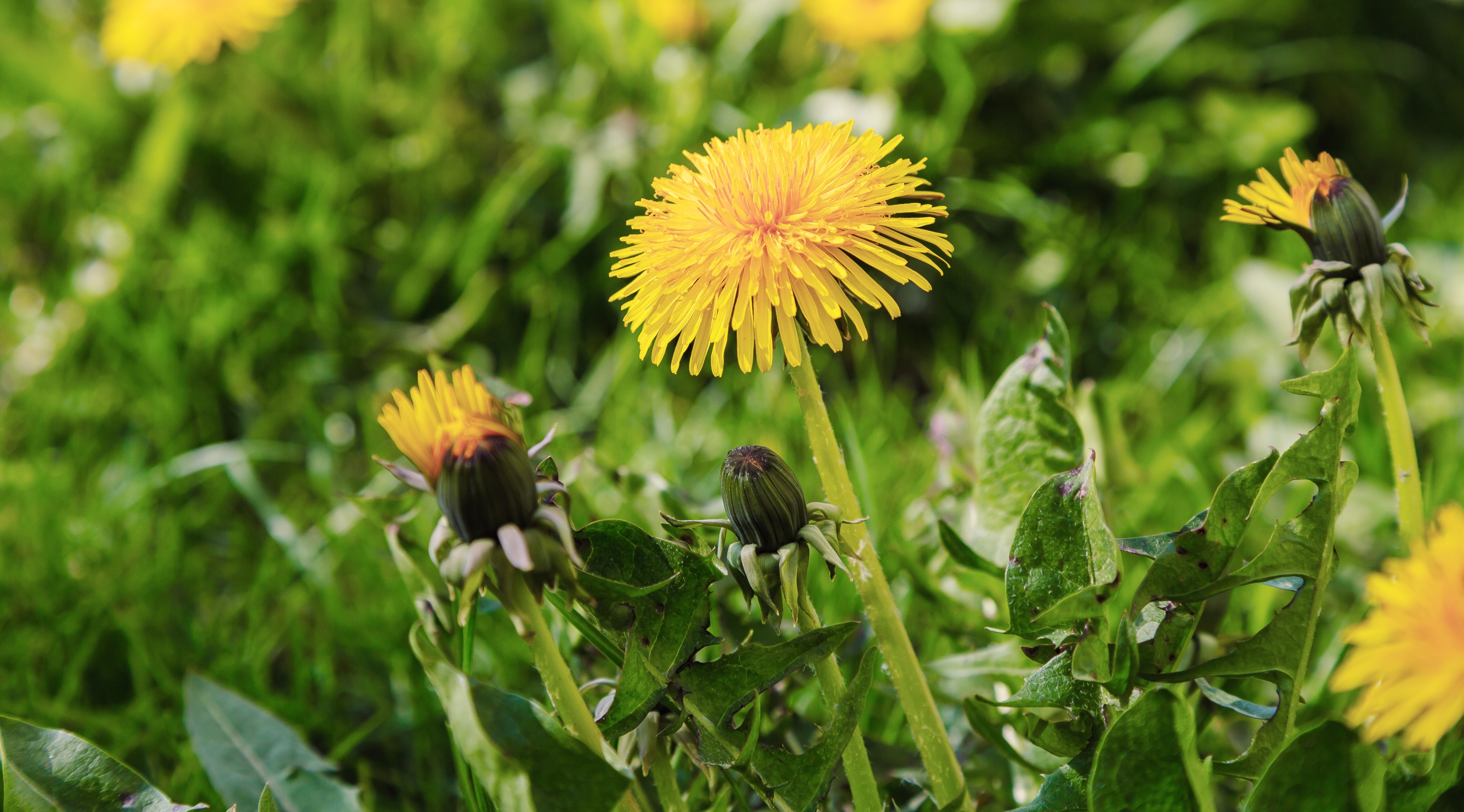
Before you can effectively tackle weeds, you need to know exactly what you're dealing with. Different types of weeds require different control strategies.
Lawn weeds generally fall into three main categories: winter annuals (like henbit and chickweed), summer annuals (like crabgrass and bindweed), and perennials (like dandelions and creeping Charlie).
Winter annuals germinate in fall and bloom in early spring. Summer annuals sprout in spring and thrive throughout the warmer months. Perennial weeds can survive for multiple years and often develop extensive root systems that make them particularly challenging to eliminate.
Take time to identify the specific weeds in your lawn. Understanding whether you're dealing with broadleaf weeds or grassy weeds, and knowing their life cycles, will guide you toward the most effective control methods.
2. Pull weeds by hand when they're young
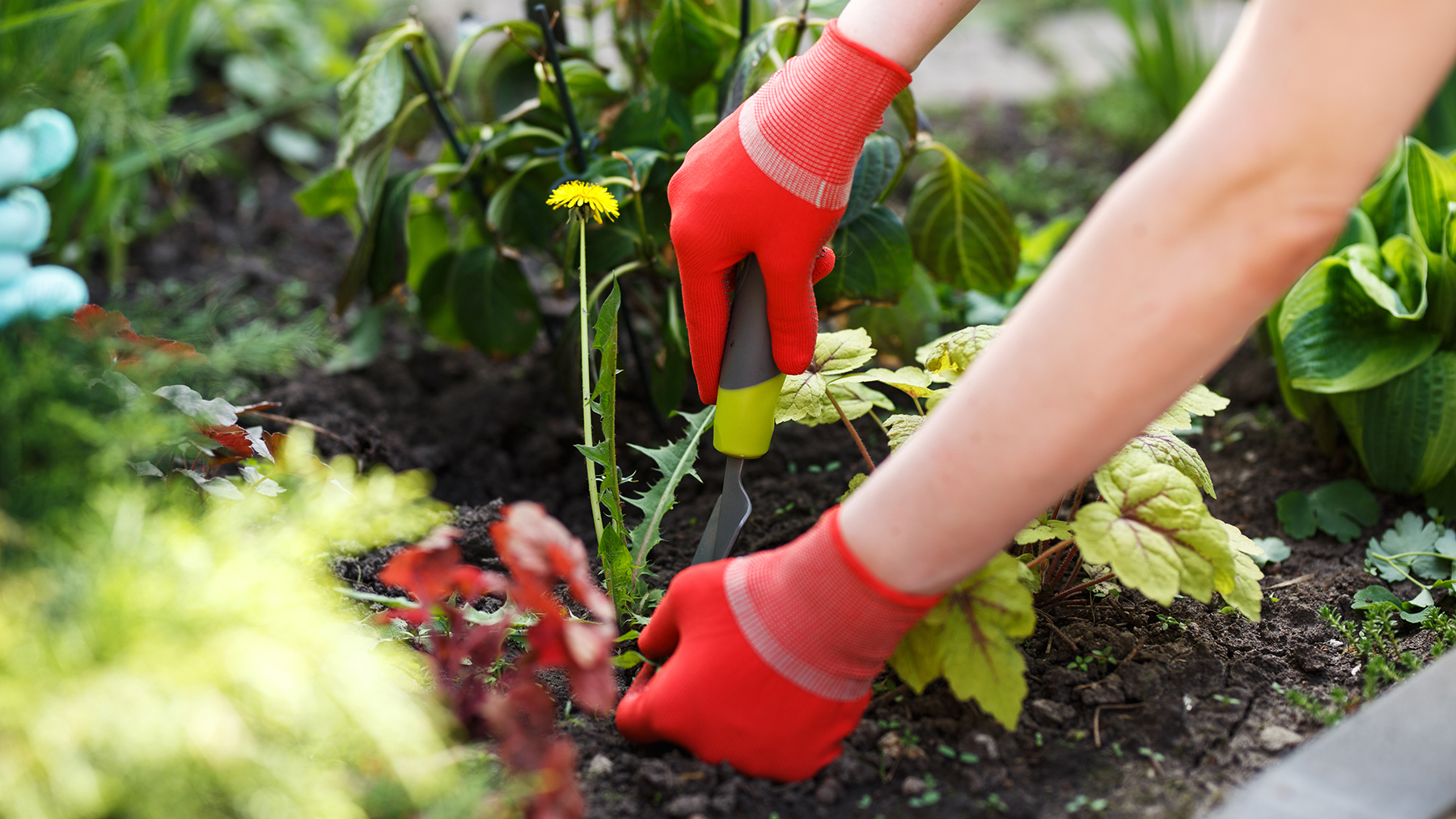
One of the most effective and environmentally friendly weed control methods is simple hand-pulling, especially when weeds are young and haven't established extensive root systems.
For annual weeds, grasp the plant near the base and pull gently but firmly to remove the entire root system. These weeds typically have shallow roots and come out easily, especially after rain or watering when the soil is moist.
Perennial weeds require more care. Use a hand weeder or garden trowel to dig around the plant, getting underneath the root system.
For dandelions and other taprooted weeds, you need to remove the entire taproot otherwise, the plant will regrow. Work your tool deep into the soil beside the weed, loosening the earth before attempting to pull it out.
The best time for hand-weeding is early spring before weeds flower and set seed. Removing one flowering weed can prevent thousands of seeds from spreading throughout your lawn.
3. Mow at the proper height
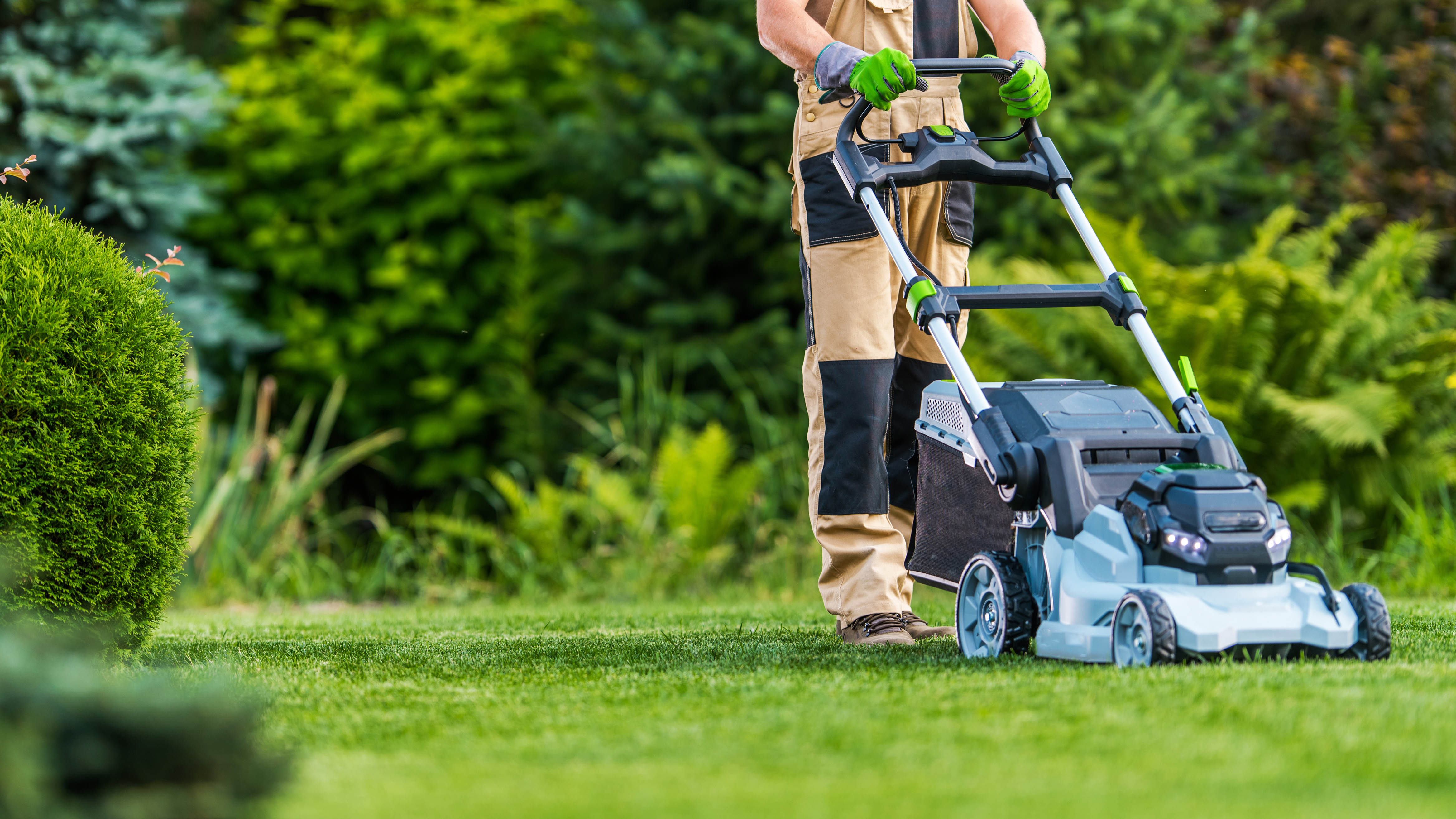
How you mow your lawn significantly impacts weed growth. Many homeowners cut their grass too short, creating ideal conditions for weeds to establish and spread.
Taller grass develops deeper roots and creates shade at the soil level, preventing weed seeds from getting the sunlight they need to germinate.
Follow the one-third rule when mowing — never remove more than one-third of the grass height in a single mowing session. This prevents stress on the grass and encourages denser growth that naturally crowds out weeds.
Adjust your mowing frequency according to growth rate rather than sticking to a rigid schedule. During peak growing seasons, you might need to mow weekly, while during slower periods, every two weeks may be sufficient.
4. Improve your fertilization strategy
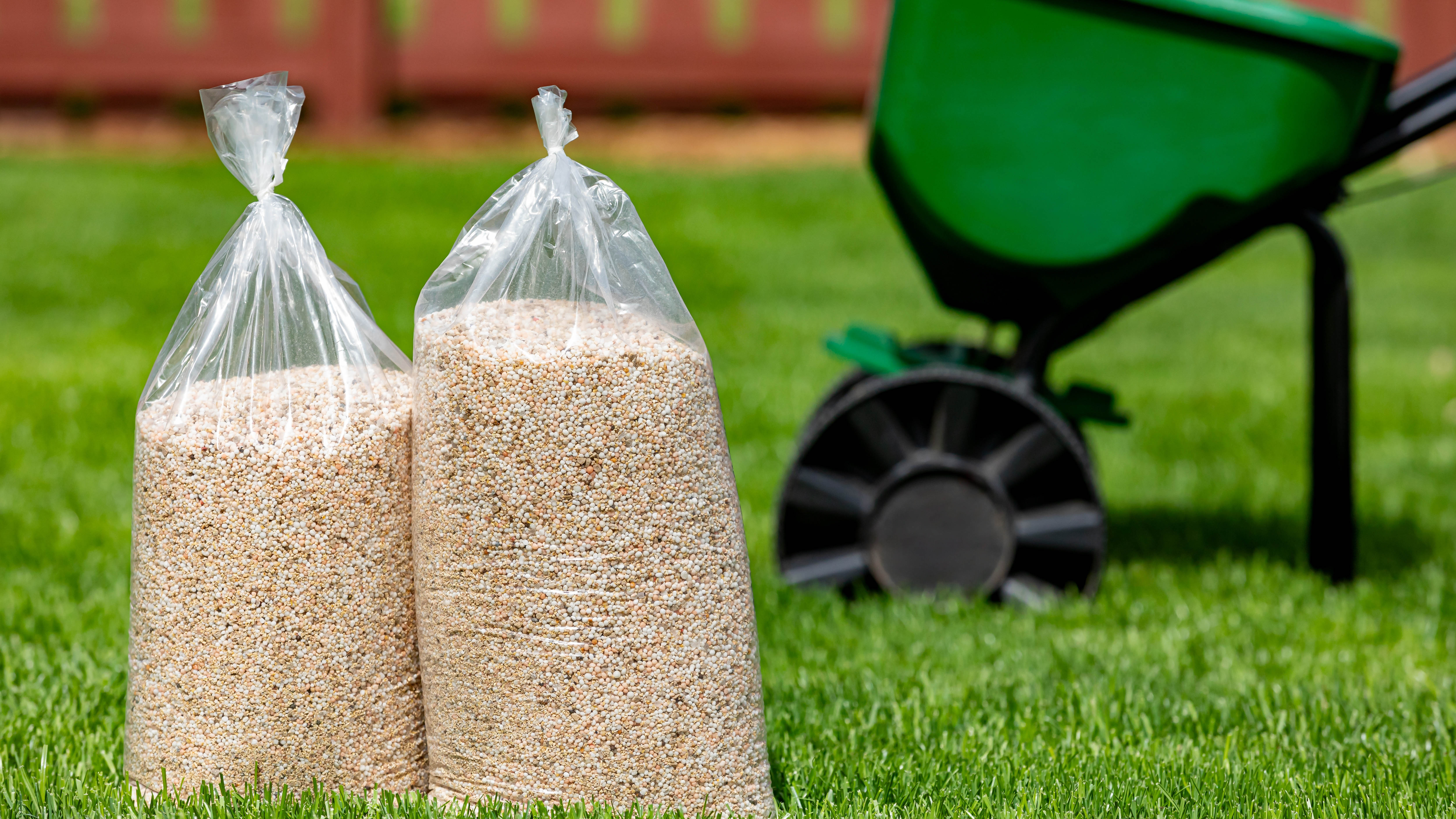
A properly fertilized lawn grows thick and vigorous, naturally outcompeting many weeds. However, improper fertilization can actually promote weed growth.
The timing of fertilizer application is crucial. For warm-season grasses, apply fertilizer about two weeks after green-up in late spring, when the grass is actively growing and can utilize the nutrients.
Applying fertilizer too early will primarily benefit weeds, which often start growing before the grass breaks dormancy.
For cool-season grasses, focus fertilization during their peak growth periods in early spring and fall. Avoid heavy fertilization during summer when these grasses are semi-dormant.
Use slow-release fertilizers that provide a steady supply of nutrients over time rather than quick-release products that can lead to excessive growth followed by stress periods.
Always follow the recommended application rates – more is not better when it comes to lawn fertilizer.
5. Water deeply but infrequently
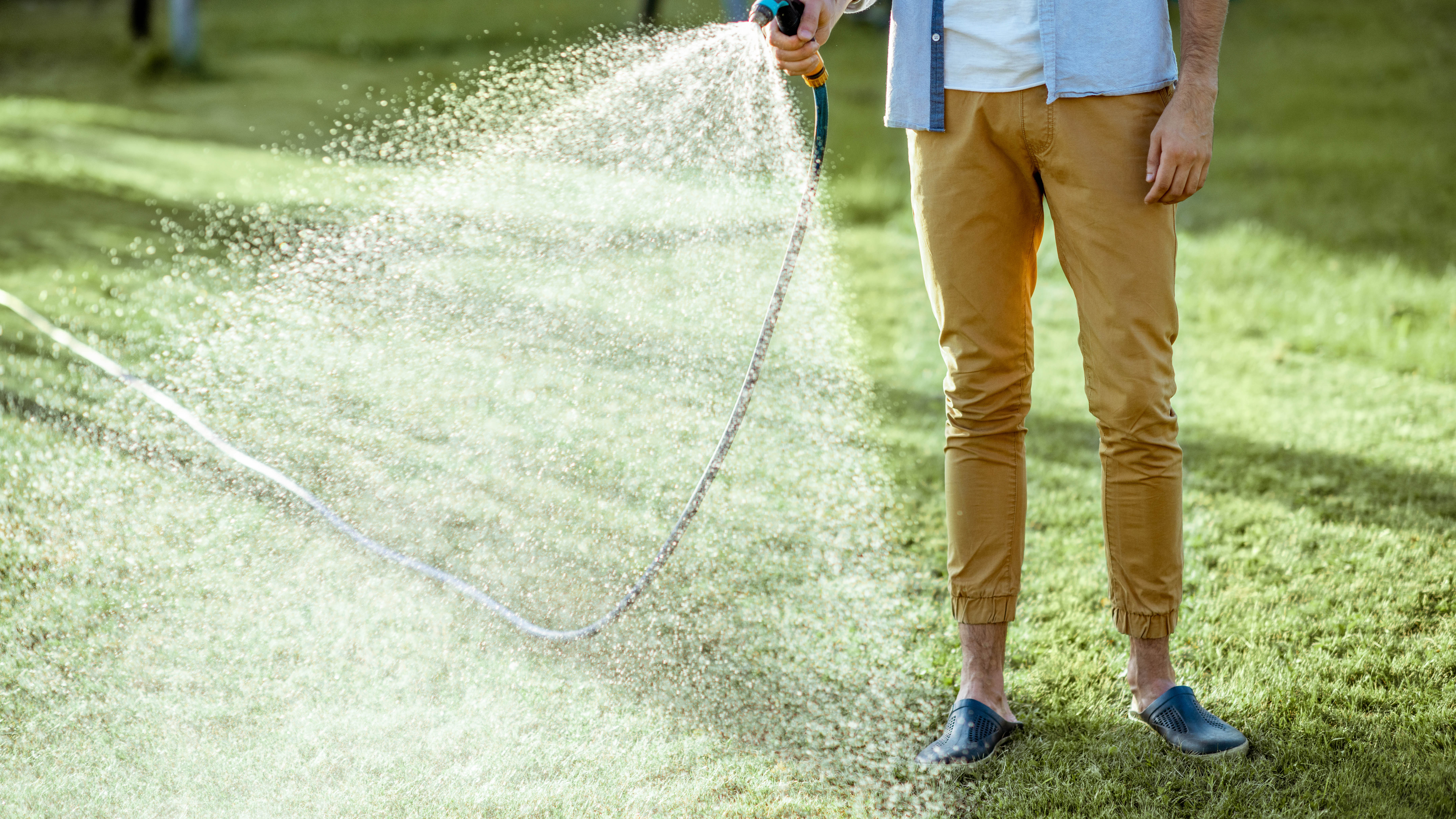
Your irrigation practices can either help combat weeds or create perfect conditions for them to flourish.
Deep, infrequent watering encourages grass to develop deeper root systems, making it more drought-tolerant and competitive against weeds. Aim to water your lawn deeply enough to moisten the soil 4-6 inches down, but only when needed — when the top 1-2 inches of soil have dried out.
Many weeds, particularly nutsedge (nutgrass), thrive in consistently wet conditions. By allowing the soil surface to dry between waterings, you create an environment that favors grass over many common weeds.
Water early in the morning, when evaporation rates are lower and the grass has time to dry before evening. Wet grass overnight can promote fungal diseases that weaken your lawn and create opportunities for weeds to invade.
6. Use selective herbicides sparingly
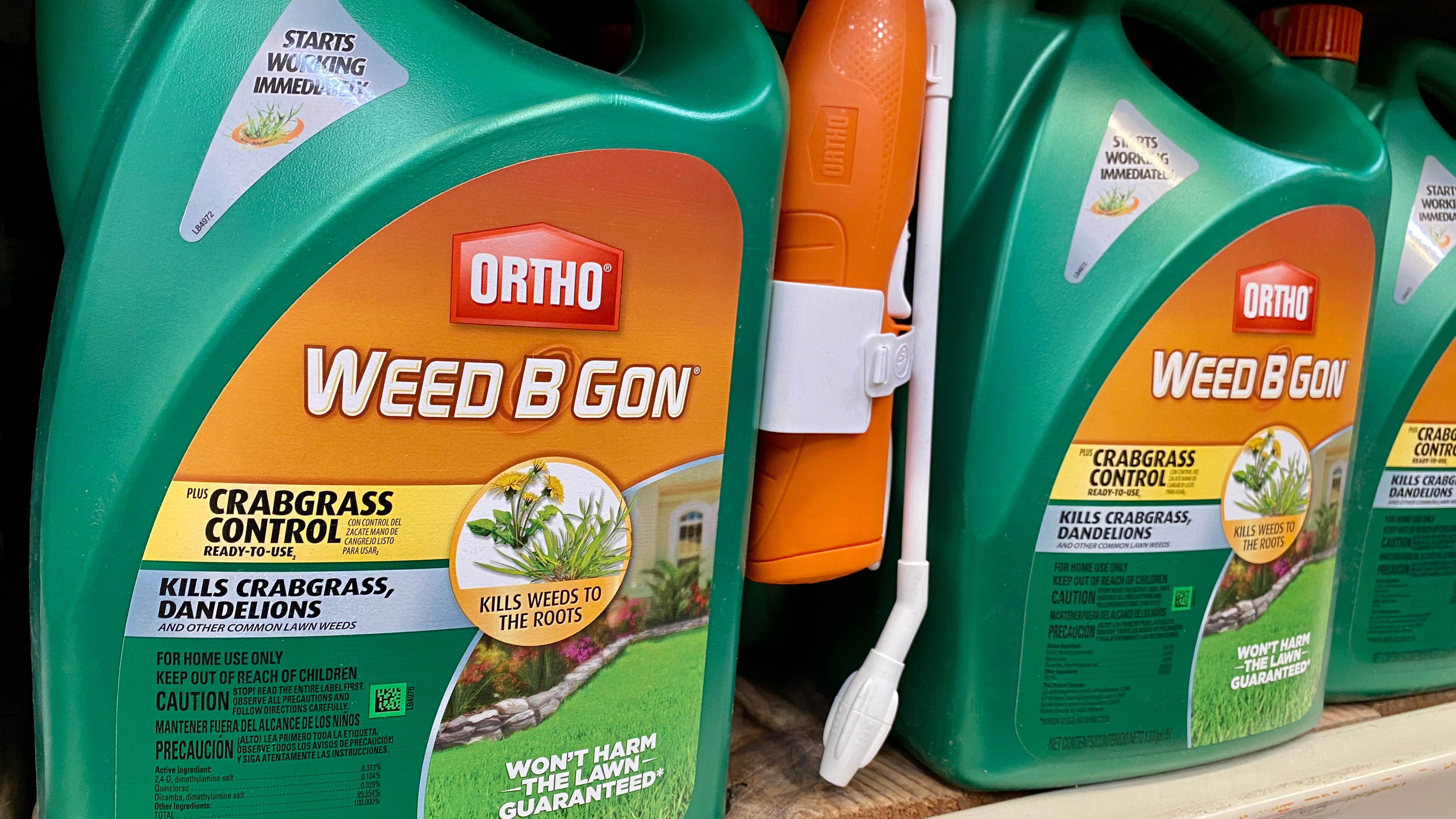
When used correctly, selective herbicides can target weeds while sparing your grass. Pre-emergent herbicides prevent weed seeds from germinating and establishing.
They're particularly effective against annual weeds like crabgrass when applied at the right time — typically early spring. Remember that pre-emergents will also prevent grass seed from germinating, so don't apply them if you plan to overseed your lawn.
Post-emergent selective herbicides target established weeds. Products containing 2,4-D, dicamba, or mecoprop (MCPP) effectively control broadleaf weeds like dandelions and clover without harming most turfgrasses. And for grassy weeds, specialized products containing ingredients like quinclorac may be needed.
For an environmentally friendlier option consider iron-based herbicides, which effectively control many broadleaf weeds while being gentler on the environment. These products work by delivering a toxic dose of iron to broadleaf weeds while grass remains unaffected.
Always follow label directions precisely, apply herbicides when weeds are actively growing, and avoid application during extreme temperatures or drought conditions when grass is already stressed.
7. Overseed bare spots promptly
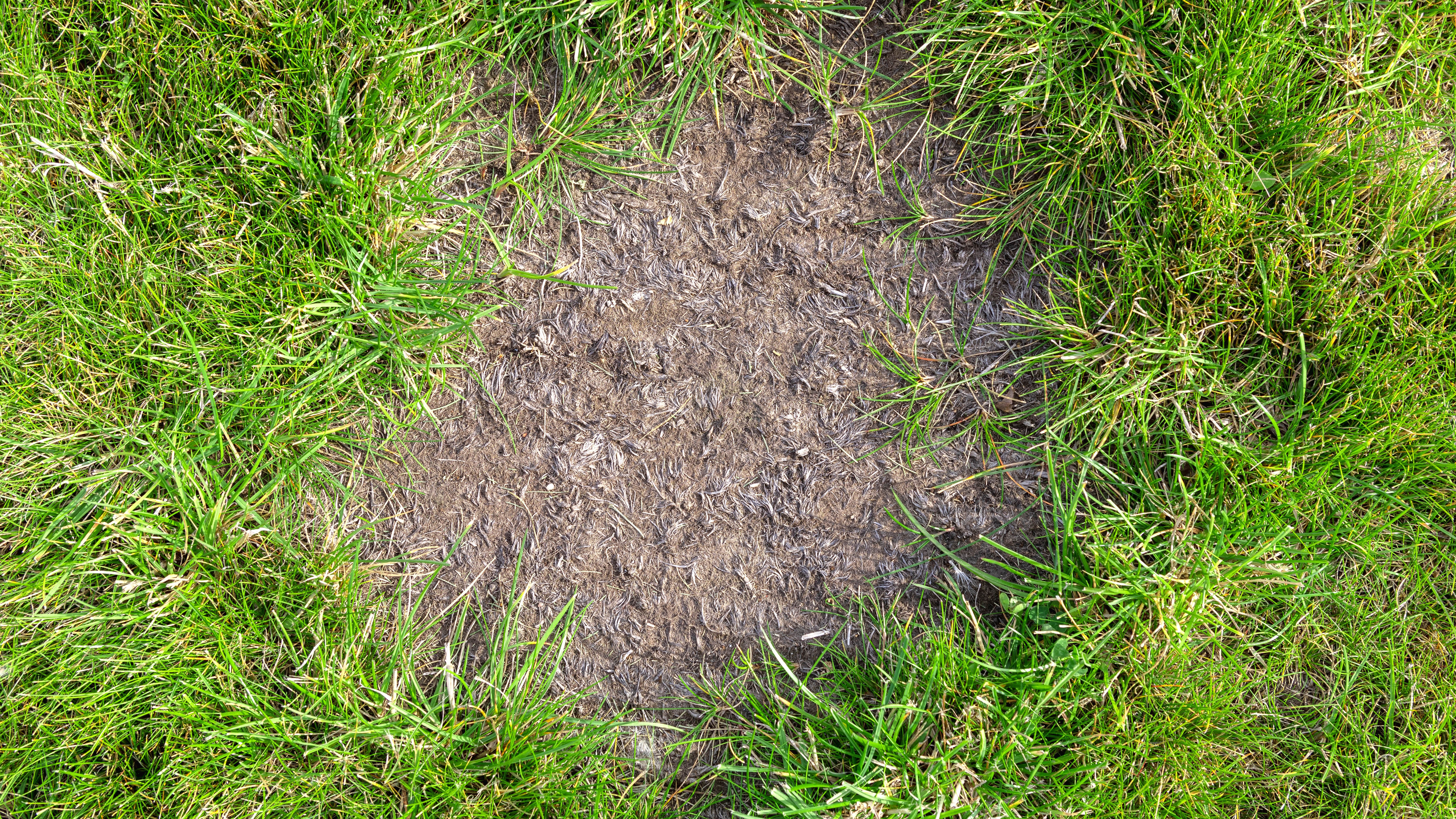
Weeds are opportunists that quickly colonize any bare soil in your lawn. By promptly overseeding thin or bare areas, you can prevent weeds from gaining a foothold.
The best time to overseed depends on your grass type. For cool-season grasses, early fall is ideal, with spring as a second-best option. For warm-season grasses, late spring through early summer works best. Choose grass seed that matches your existing lawn for a uniform appearance.
Prepare the area by removing any existing weeds and lightly raking the soil surface. Apply seed at the recommended rate, lightly rake it in, and keep the area consistently moist until germination occurs.
Adding a thin layer of compost can improve seed-to-soil contact and provide nutrients for the young grass seedlings.
Consider using a starter fertilizer specifically formulated for new grass to promote quick establishment. The faster your new grass fills in, the less opportunity weeds have to invade.
Frequently asked questions
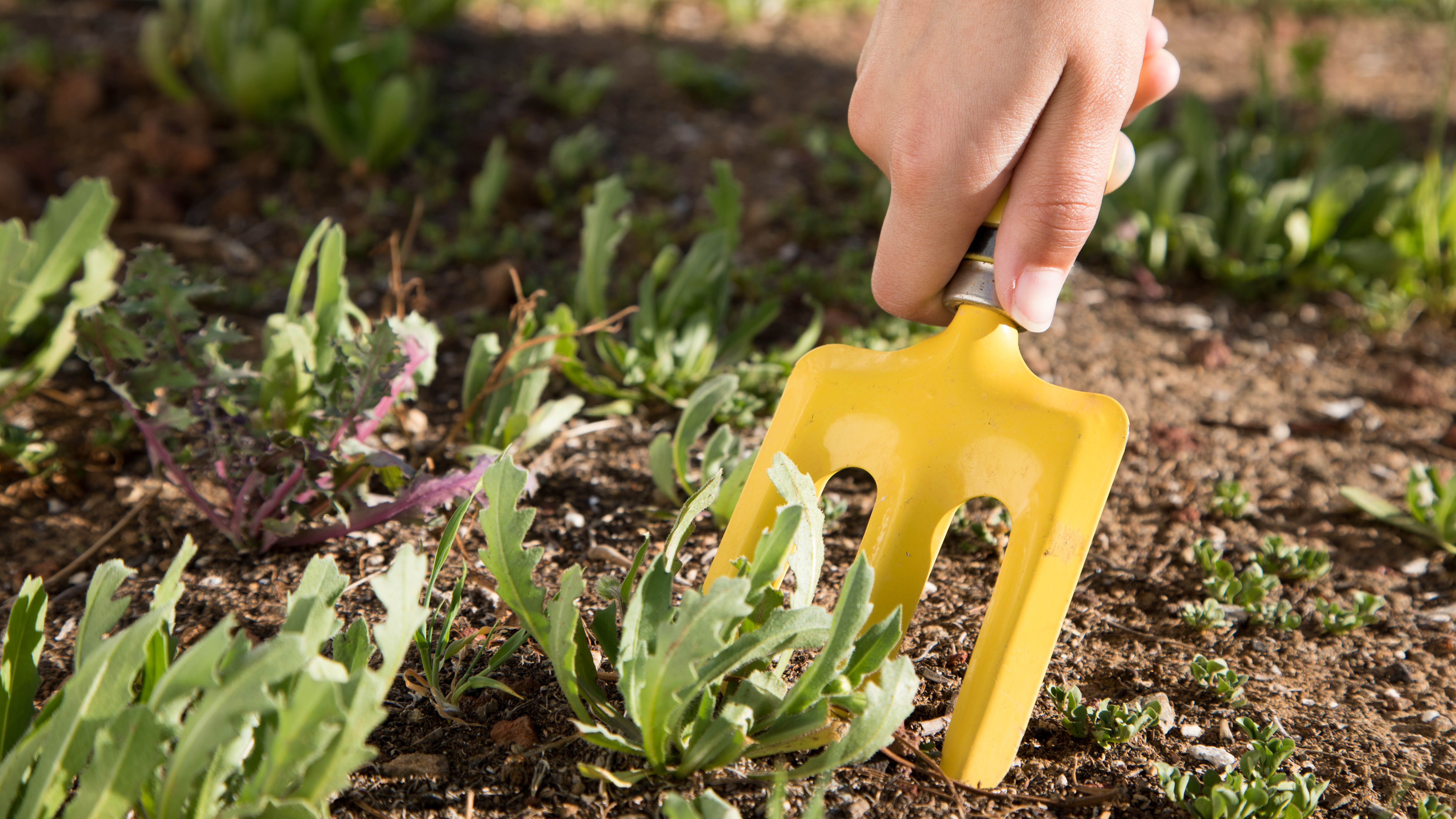
What types of weeds are most common in lawns?
Most lawn weeds fall into three categories: winter annuals, summer annuals, and perennials. Each type behaves differently and requires a specific strategy to control.
The first step to managing weeds is learning how to spot what you’re dealing with — proper identification makes all the difference.
How can I tell which weeds are growing in my lawn?
You can identify weeds by looking closely at the leaf shape, growth pattern, and flower structure.
Sign up to get the BEST of Tom's Guide direct to your inbox.
Get instant access to breaking news, the hottest reviews, great deals and helpful tips.
Many plant ID apps can help, or even your iPhone, and you can also compare them with photos of common weeds in your region.
What tools work best for pulling weeds by hand?
When working in turf, handheld tools like trowels or weed pullers are your best bet — larger tools like hoes can sometimes damage the surrounding grass.
Go for something sturdy, especially if you're tackling deep or well-rooted weeds that can put serious stress on flimsy gear.
How do I stop weeds from growing back?
The best long-term defense against weeds is a thick, healthy lawn.
After you remove weeds, overseed bare spots, mow regularly, and keep up with fertilizing and watering to strengthen your turf. The denser your grass, the less room weeds have to sneak back in.
And there we have it! You've now learned how to banish weeds from your lawn without killing the grass. While you're here, why not take a look at some of our other helpful gardening guides?
For a beautiful garden, check out 7 colorful flowers to plant in April for a vibrant summer garden and 9 perennial flowers to plant in April for blooms year after year. And if you're wanting to plant veggies, don't miss 7 beginner-friendly vegetables in April for a stunning summer harvest.

Kaycee is an Editor at Tom’s Guide and has been writing for as long as she can remember. Her journey into the tech world began as Cazoo's Knowledge Content Specialist, igniting her enthusiasm for technology. When she’s not exploring the latest gadgets and innovations, Kaycee can be found immersed in her favorite video games, or penning her second poetry collection.
You must confirm your public display name before commenting
Please logout and then login again, you will then be prompted to enter your display name.
